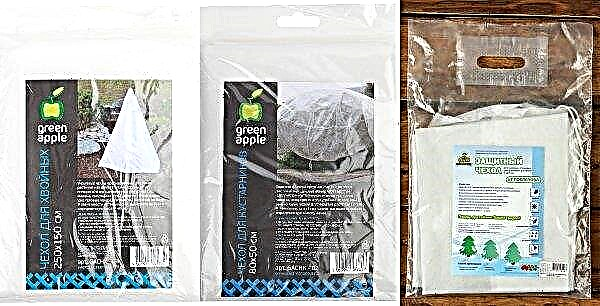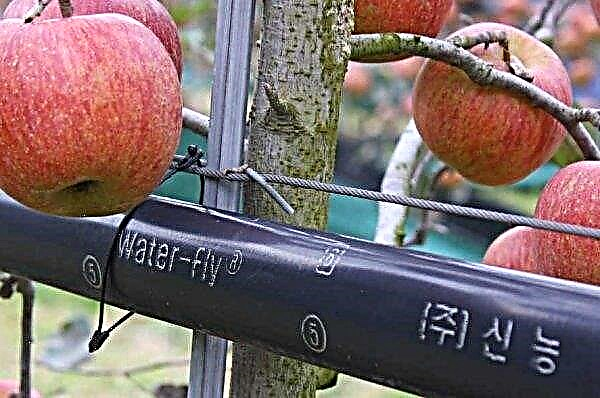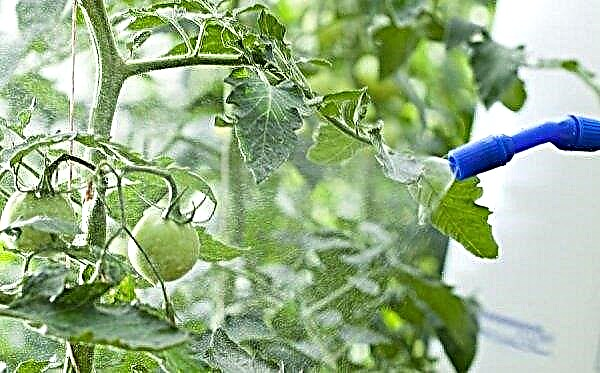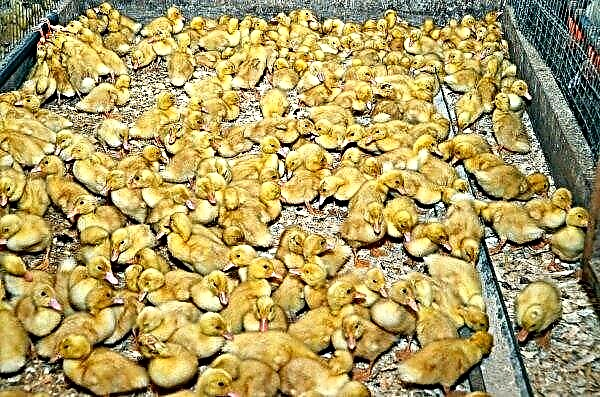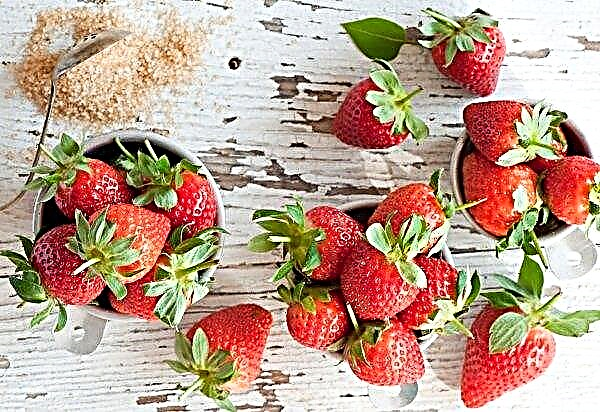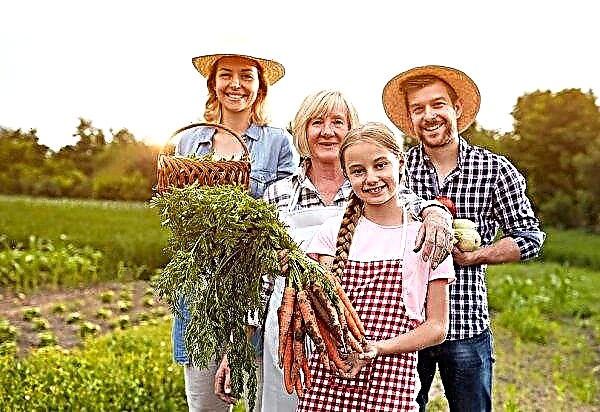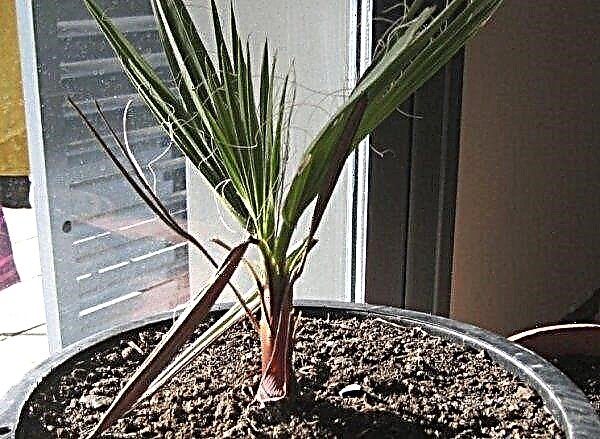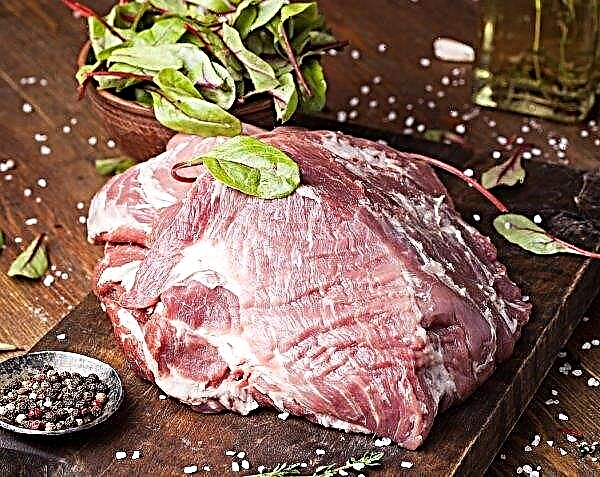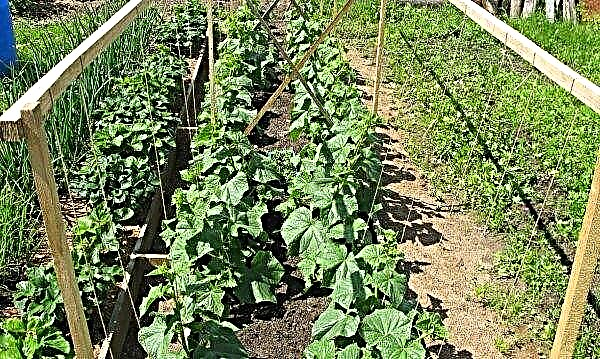Almost each of us is familiar with broccoli, and despite the fact that this vegetable has entered modern culture relatively recently, he managed to thoroughly gain a foothold in the culinary of many countries. Although not every summer resident decides to grow this cabbage on its own site. It is believed that broccoli is quite a whimsical crop for soil and climatic conditions, so cultivating it is not so simple. From this article you will learn in detail how broccoli grows, as well as what needs to be done to successfully harvest this cabbage.
Growing broccoli
Growing broccoli in your area is not as difficult as it seems at first glance, but you should definitely decide on the type of future cabbage. In gardening, many of its varieties are distinguished, however, all of them are divided into 2 main groups: ordinary and so-called asparagus.
Simple, or ordinary cabbage, forms the well-known head of cabbage, which grows on a shortened thick stem. Asparagus does not head out; instead, it throws out a few thin stems on which a small head develops. In the photo she looks like a drumstick with a thick stem and a characteristic cap.Did you know? Broccoli cabbage was obtained by interspecific hybridization in the Mediterranean during the time of Ancient Rome (VI–V centuries BC e.). Thus, this plant is considered one of the first artificially bred species.
Landing and care
Cultivation of plants begins with growing seedlings, only in this case it is possible to achieve full-fledged ripening of cabbage, regardless of weather conditions. Start preparing seeds in the first half of March.
The first thing to start with is the preparation of seed material. For this, broccoli seeds are soaked for 30 minutes in hot water (+40 ... + 50 ° С), after which the seeds are sterilized (soaked for 15–20 minutes in a 2% solution of potassium permanganate or for 5–10 minutes in 70% alcohol) . The day before sowing, the seeds are germinated, for this they are placed in an ash infusion at night (1 tbsp. L / 1 l of water).

After this, the seeds can be successfully sown. To do this, use common containers or individual garden containers. In common containers, the cabbage is sown in oblong rows with a row spacing of 3 cm. Subsequently, they are thinned out, leaving only one plant per 9 cm². When grown in individual containers, special garden cartridges are used. 2-3 seeds are placed in each of them, of which only one sprout is also left. Regardless of the type of capacity, the depth of the seeds should not be more than 1.5 cm.
Important! Sow seeds only in loose and fertile soil. The most suitable for this is a mixture of sand, garden soil and humus (1: 1: 1).
In the phase of 2-3 leaves, cabbage is dived. The new capacity is usually a small individual pot or a plastic cup, while no more than 1 plant is planted in one such capacity. Transplanting seedlings to a permanent place is carried out 35–45 days after the appearance of the first entrances. A favorable period for this in the temperate climatic zone begins at the end of April, at which time about 6 true leaves develop on young cabbage.
For planting, choose open areas, but slightly shaded, since direct sunlight can damage the delicate tissues of plants. The selected site must be fertilized. In the fall, lime is added to the soil, and a few weeks before planting, the soil is fertilized with manure, potassium nitrate and superphosphate. Culture is planted in a row or staggered manner, with a distance of about 40-60 cm between each plant.

High-quality care of plantings is the main condition for obtaining a rich harvest. Cabbage is watered every 2 days, but in hot weather the procedure is carried out daily or twice a day: morning and evening. The most favorable time for this is considered to be late evening or early morning. Plantations are watered with clean and settled water, under the root or drip irrigation. After each watering, the beds are sure to loosen.
This measure helps to prevent the appearance of weeds, saturate the roots with oxygen, and also avoid stagnation of water, which often becomes the main cause of rotting of the roots. They carry out loosening to a depth of not more than 8-10 cm. Broccoli responds well to top dressing.
Important! Broccoli and other cruciferous plants are not recommended to be grown in the same place more often than 1 time in 4 years.
They are carried out throughout the growing season, regardless of soil fertility, according to the following schedule:
- First feeding do 2 weeks after transplanting seedlings. It is best during this period that cabbage reacts to organic compounds, therefore, as a fertilizer, a solution of cow manure (1:10) or bird droppings (1:20) is used.
- Second feeding carried out 2 weeks after the first, with the same solution of mullein or bird droppings.
- Third fertilizer garden beds are performed during the active formation of inflorescences using a solution consisting of 10 l of water, 40 g of nitroammophoska, 20 g of ammonium nitrate and 10 g of potassium sulfate.
- Fourth feeding carried out a week after the first harvest, basing it on a mixture of 10 liters of water, 30 g of potassium sulfate, 20 g of superphosphate and 10 g of ammonium nitrate.
How to determine ripening
Harvesting is the most crucial stage, however, many vegetable growers do not even know when it is best to cut inflorescences from the bush. As you know, when the fruit overrides, bright yellow flowers appear on them, which lead to a deterioration in the aromatic properties of cabbage, up to the complete unsuitability of the crop, so many farmers are in a hurry to cut cabbage as early as possible. Often this leads to the harvesting of unripe broccoli, due to which the vegetable is unable to absorb the vitamins and nutrients in full.
Often this leads to the harvesting of unripe broccoli, due to which the vegetable is unable to absorb the vitamins and nutrients in full.
This can be avoided by using the following broccoli maturity guidelines:
- a mature head always has a diameter of about 10 cm;
- ready-to-pick cabbage has a rich hue and color, while all buds must be closed;
- ripe heads are always loose, but dense;
- the first fruits usually ripen 2 months after emergence, by this time the head should reach a weight of 400–500 g.
Cutting rules
Correctly cutting the heads of broccoli is no less important than growing a culture.

Experienced gardeners give tips on how to remove the fruits of such cabbage correctly:
- pick fruits early in the morning, because under the daytime sun they will quickly fade;
- only heads of inflorescences are suitable for collection and use, the remaining parts are left on the bush;
- the bush is trimmed carefully to avoid injuring the stem, otherwise it will lead to its death;
- cut off the heads with a sharp knife, pinching or breaking out can lead to wilting of the entire bush;
- winter varieties are harvested before the onset of frost, otherwise the crop becomes unsuitable for consumption and processing;
- the second and other generations of cabbage ripen within a week, so the plantings need to be examined regularly.
Did you know? The largest producer of broccoli in the world is the United States. In California, local farmers cultivate about 90% of the world's total vegetable crop.
Terms and rules of storage
Cabbage is considered a perishable product that, under the influence of various weather and temperature conditions, instantly fades and loses its taste and marketability. However, subject to low temperature and optimal humidity, broccoli fruits from the garden are able to be stored for quite some time. In this case, it is necessary to take into account the characteristics of the variety, as well as know exactly when to harvest, as this directly affects its safety.
Fresh
Since this cabbage fades quickly, keeping it fresh for a long time will not work. Usually, under optimal conditions, cabbage is stored for several weeks, but for this, after harvesting, the crop should be well prepared. The heads are thoroughly washed in cold water, and then cut off. It best protects vegetables from premature wilting or rotting. Store broccoli at a temperature of 0 ... + 5 ° C in a special compartment for vegetables in the refrigerator. Only here is the humidity necessary for long-term storage observed.

Accurate adherence to agricultural cultivation techniques will help to more effectively extend the season of eating fresh cabbage. This provides for a gradual harvest throughout the active growing season. The heads are torn off in turn, due to which broccoli keeps up with small portions throughout the season.
Frozen
It is believed that broccoli is practically unsuitable for prolonged freezing, but under favorable weather conditions, when the vegetable grows and ripens quite quickly, and it has to be harvested almost every day, the need for prolonged freezing becomes simply necessary.
Important! Only late varieties of cabbage are suitable for freezing, since early varieties do not possess the necessary keeping quality and usually deteriorate quickly even at low temperatures.
In this case, you can save cabbage for 6 months, which makes it possible to use fruits for cooking only when necessary. A vegetable requires special preparation for freezing, without which it will spoil instantly in the freezer.
It is done like this:
- Wash the cabbage thoroughly and clean it of dry parts and the stem.
- Divide the heads into small inflorescences, and then soak them in saline (1 tbsp. L / 1 l of water) for about 30 minutes.
- Rinse the cabbage under running water, and then boil in boiling water for 3 minutes.
- After cooking, dip the hot vegetable in ice water for 5 minutes. It is necessary to put several ice cubes in the liquid.
- Dry the broccoli and then pack it in plastic bags or food containers.
The use of broccoli in cooking
This variety of cabbage is used in cooking everywhere. It is fried, stewed, boiled, and also used as the main ingredient in all kinds of dishes. Fresh cabbage is used to prepare seasonal salads in all kinds of variations. With a strict diet, broccoli is used to make smoothies.

It not only harmoniously supplements other vegetable crops in the drink, but also charges it with valuable vitamins, minerals and nutrients. This cabbage found its application in the confectionery art, where it is actively used as a filling for all kinds of sweet pies and casseroles.
To ensure a high-quality and rich broccoli crop, when cultivating a crop, you should definitely pay attention not only to the care of the plantings, but also to the harvesting process. The plant is quite fragile, so its crop should be harvested carefully, only with the help of sharp garden tools and always before flowering inflorescences.

